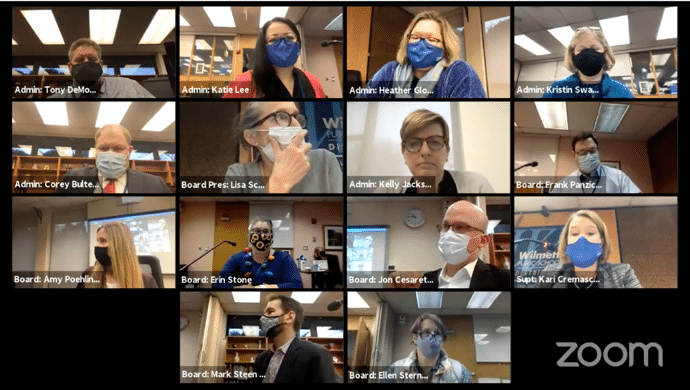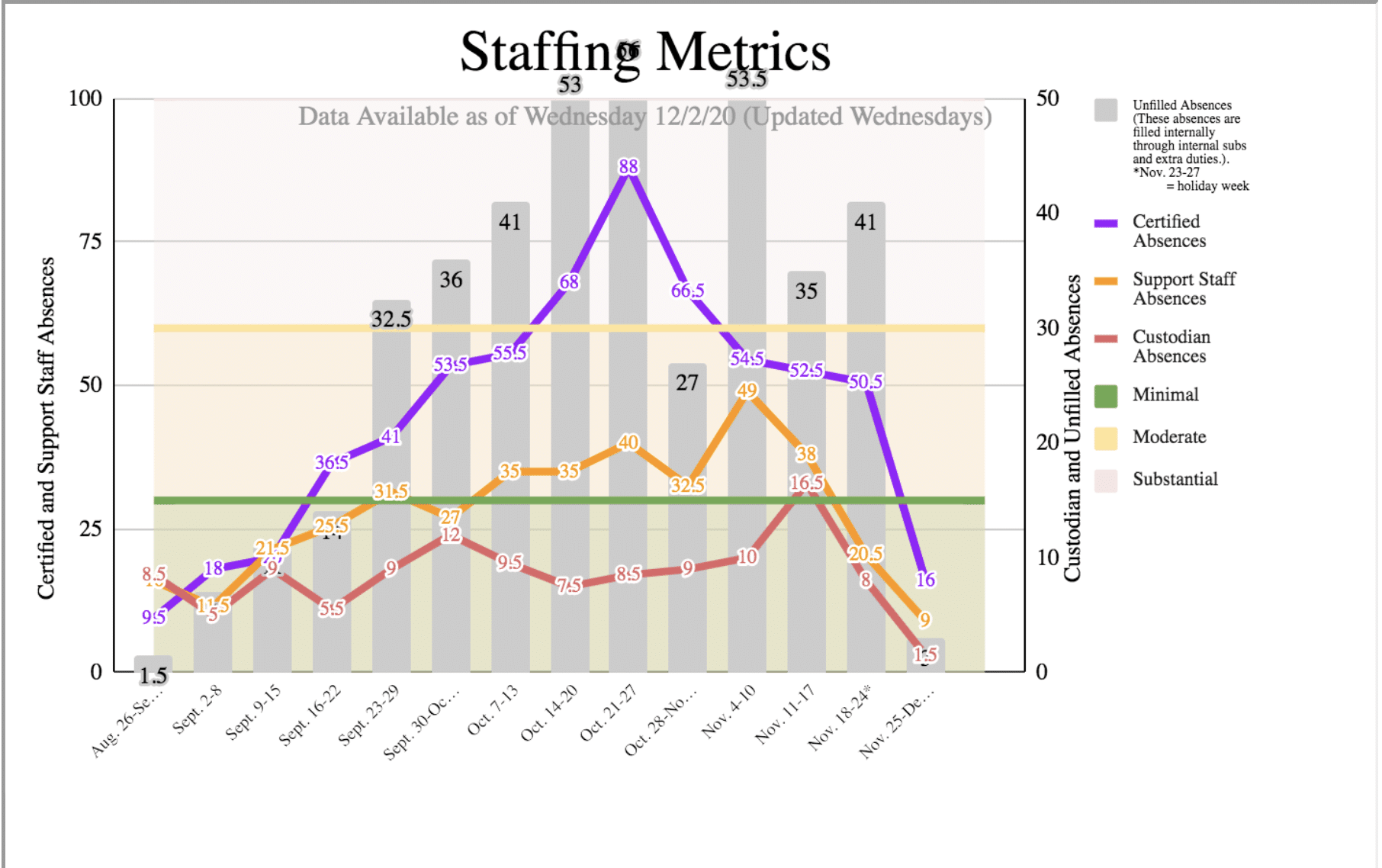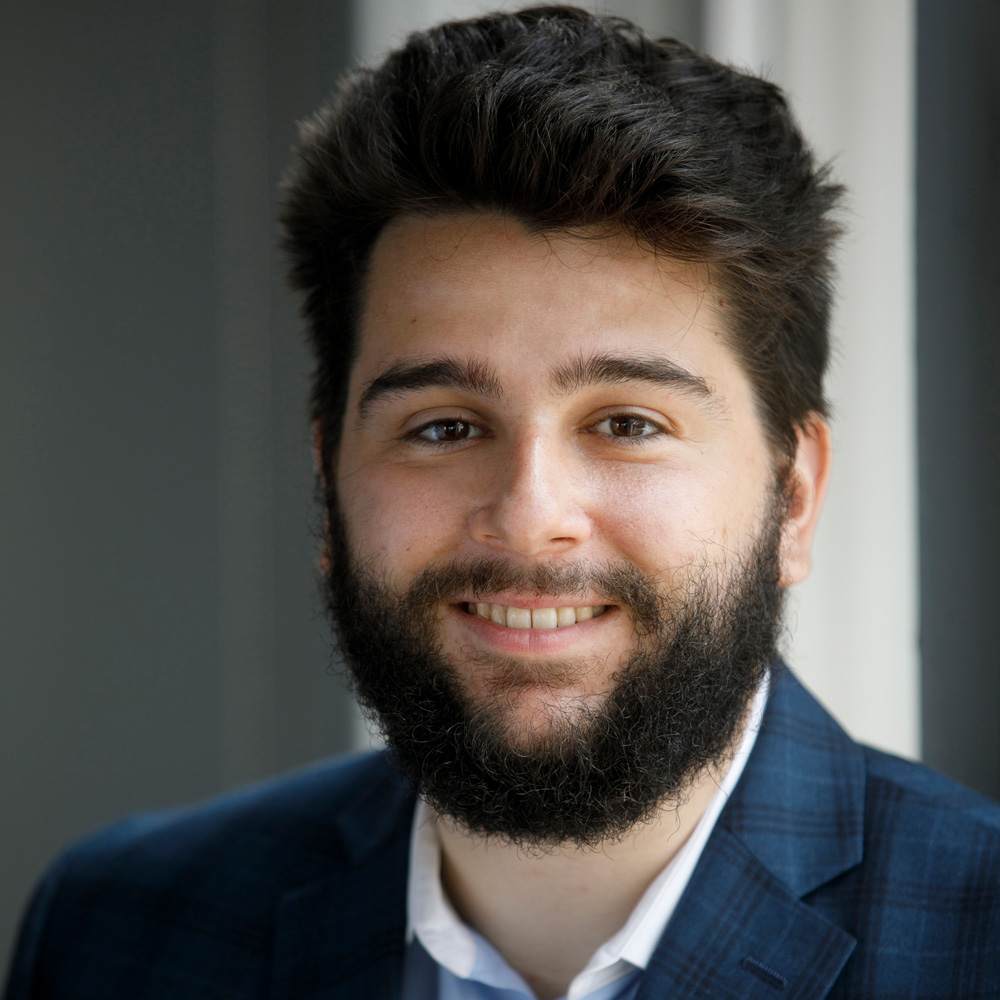
Wilmette Public Schools to return to hybrid model for one week despite staffing uncertainty
After two weeks of all-remote learning, board approves one of week of hybrid model before winter break
Wilmette District 39 students are set to return to the previously-in-place hybrid learning model for the week of Dec. 14 following a unanimous vote from the board of education during a near-five-hour-long committee of the whole meeting on Monday, Dec. 7.
Several members of the board cited the value in avoiding what would be a seven-week break from in-person learning for students in Grades 3-8. District 39 first announced a one-week adaptive pause of its hybrid model in early mid-November. The Nov. 30-Dec. 4 pause was extended a second week, this week Dec. 7-11.
The time off for winter break and a week after make up the potential seven-week in-person-learning hiatus.
“In this particular situation, right now, there is no perfect solution,” board member Ellen Sternweiler said. “There is the best that we can do at the moment and at the moment we are looking at the potential of seven weeks for some of these (students) and, when you look at the social-emotional impact … that one week could make all of the difference for so many kids.”
The board’s approved operational plan flies counter to a recommendation from Superintendent Dr. Kari Cremascoli, district administration and the Metrics Reopening Advisory Team that was first made last Monday, Nov. 30, during a special meeting of the board.
The administration’s recommended that the district continue its pause of in-person learning through the week of Jan. 4.
During their meeting last week, board members greenlighted a plan calling for in-person instruction for students in grades K-2 and “students with comprehensive special educational needs” and remote instruction for students in grades 3-8.
The board was not willing to approve remote learning during the week of Dec. 14 despite the increasing challenges of operating on-site instruction that the administration presented.
The board solidified its stance Monday, and board members stated they understood the challenges and accepted that the decision could result in learning cohorts shifting to remote learning last minute.

“By saying that we would like in-person instruction, we are saying that when we weigh the risks and the benefits, we are saying that there is a greater benefit for the students to be in-person than the downsides,” board president Lisa Schneider-Fabes said.
When the administration’s recommended adaptive pause plan was first brought forward, district officials cited staffing challenges as their primary reasoning for proposing that course of action.
Cremascoli has attributed those challenges to a growing number of quarantines, absences due to illness from and exposure to COVID-19, limited substitute staff availability, and more.
Prior to discussion from the board on Monday, both Cremascoli and Dr. Heather Glowacki, assistant superintendent for personnel, updated the board on the district’s staffing metrics.

Cremascoli said the district is currently looking at 15 staff members who will need daily substitute coverage the week of Dec. 14. She added a belief that, as of Monday, the district could staff next week.
“Right now for the week of the 14th, we do believe that we can staff our in-person program but we expect that there will be some classrooms or pods that would need to move to remote,” she said. “That inconsistency and unpredictability is what we worry the most about.”
Glowacki added that although the administration believes that it can staff next week, she “cannot promise” that it will because there is still an added unknown element of staff members that may be exposed and subsequently need to quarantine.
“The challenge really is that as community spread increases so too does exposure and possible exposure to our staff,” Cremascoli said. “Staff must stay home and isolate if they have been exposed or if a household member has been exposed or if they are just experiencing symptoms — that is what we require of our staff in order to keep our school environments as healthy and safe as they have been.”
Cremascoli also rebuked comments previously brought forward from community members that suggested the district was ill-prepared for a staffing shortage.
“This is not a lack of anticipation of the challenge,” she said. “I would say emphatically that these challenges were not a surprise nor were we caught off guard and in fact, we have been closely monitoring staffing since September knowing that if community spread rises, then our need for additional staff to be on quarantine … would also rise.”
After adopting the return to hybrid learning via a 7-0 vote, several board members described the decision-making process as one with no perfect solution.
“There are no perfect solutions to the challenges that we face and there’s no clear right answer or clear consensus in our community, nor is their clear guidance from our governing and regulatory bodies,” Schneider-Fabes said.
“So, as a board and a community, we’re balancing and weighing many factors and competing needs. We all try to make the best decisions that we can knowing that each decision is not going to make everyone happy and there’s going to be downsides for every choice we make.”
Officials expressed their appreciation for administrators, teachers, support staff and parents, and thanked all for taking the time to hear differing perspectives.
A review of the district’s operational metrics can be found here.
Hearing from the public
Nearly two dozen members of the public submitted written comments to the board prior to Monday’s meeting.
Contrary to the public comments submitted Nov. 30 — when all but one of nearly three dozen comments favored no pause in hybrid learning — several comments were in favor of extending the pause for the week of Dec. 14.
Multiple public comments were also geared toward support of returning to in-person instruction next week.
Additionally, nearly half of the comments encouraged the board to consider the perspective of teachers. Several of those commenters also said the rhetoric used during the public comment of the Nov. 30 portion of the meeting was disrespectful toward the district’s teachers and support staff.

Martin Carlino
Martin Carlino is a co-founder and the senior editor who assigns and edits The Record stories, while also bylining articles every week. Martin is an experienced and award-winning education reporter who was the editor of The Northbrook Tower.


